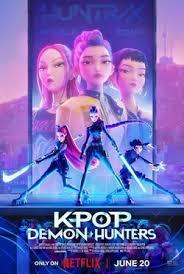The Rise of K-Pop Demon Hunters in Popular Culture

Introduction
The intersection of K-Pop and supernatural themes has captivated audiences globally, with the concept of ‘K-Pop demon hunters’ emerging as a significant trend in contemporary pop culture. This phenomenon combines beloved music idols with fantastical narratives, appealing to both K-Pop enthusiasts and fans of mystical storytelling. With increasing popularity, understanding its implications on fan culture and the entertainment industry is essential.
The Rise of K-Pop Demon Hunters
In recent months, the trend of K-Pop demon hunters has been propelled by various artists and groups incorporating supernatural storylines in their music videos, performances, and promotional materials. Groups such as Stray Kids and ITZY have made headlines for their captivating visuals and story-driven concepts featuring demon hunting. The recent release of hit tracks, showcasing choreography inspired by combat and mysticism, has further fuelled fan interest.
Social media platforms, particularly TikTok and YouTube, have played a pivotal role in amplifying this trend. Fan-created content, including dance challenges and theory discussions centered on demon-hunting narratives, has gone viral, fostering a strong community of K-Pop enthusiasts engaged in these fictional universes. This trend has also seen significant participation from global fans, as K-Pop continues to break language barriers.
The Cultural Significance
The K-Pop demon hunter trend intertwines with traditional folkloric themes from various cultures, tapping into narratives surrounding good versus evil. The incorporation of such themes provides deeper storytelling elements, allowing fans to connect emotionally with the music and its artists. Additionally, it opens discussions about mental health, resilience, and heroism in overcoming adversities—a theme profoundly resonant with the youth demographic.
Furthermore, the collaboration between K-Pop artists and graphic novel creators has resulted in a rise in webtoons and comics that depict these stories. These ventures not only enhance the music but also create multi-dimensional worlds for fans to explore, contributing to the organic growth of the K-Pop demon hunter narrative.
Conclusion
The phenomenon of K-Pop demon hunters highlights the innovative ways in which the industry adapts to cultural trends and fan engagement. As this trend continues to evolve, it is likely that more artists will experiment with diverse narratives, further bridging gaps between music, storytelling, and fan culture. With the global reach of K-Pop, the influence of such themes will likely impact various aspects of entertainment, paving the way for future trends within this vibrant industry.
